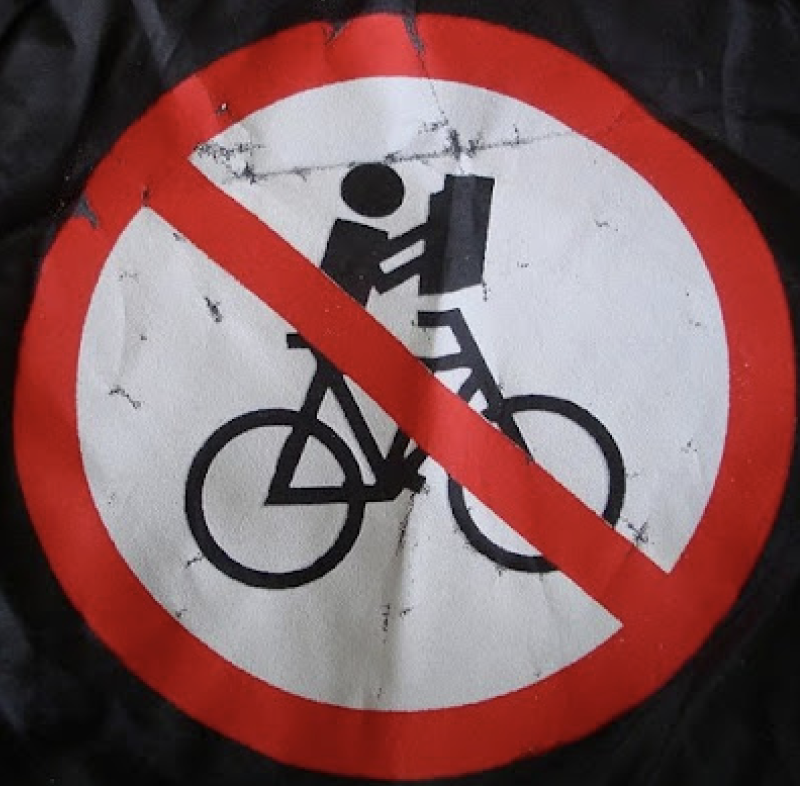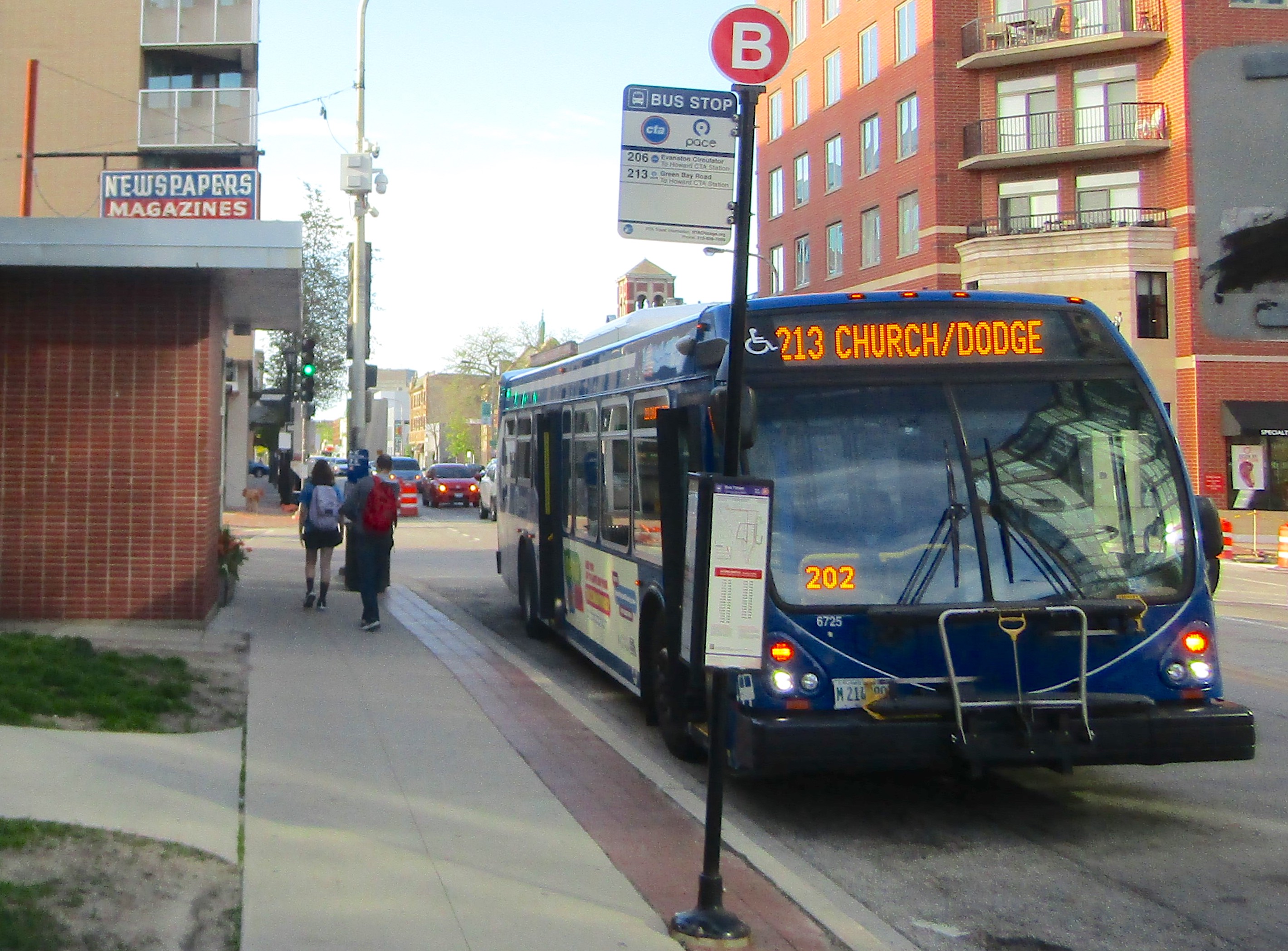Despite NIMBY pushback to Wood PBL plan, LaSpata says the bikeway is moving forward
7:16 PM CST on February 8, 2022
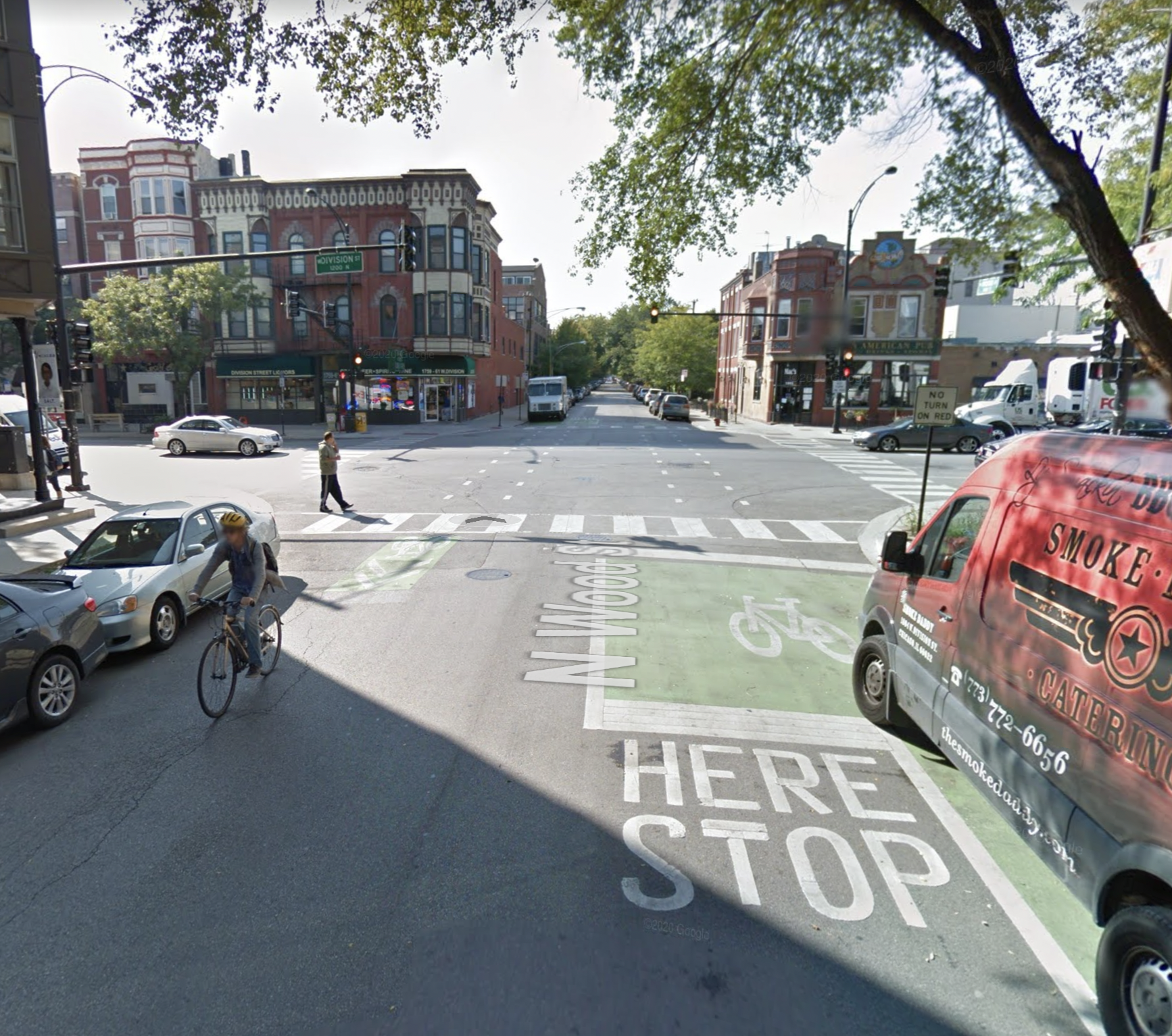
The existing Wood Street Neighborhood Greenway route, looking south at Division Street. Image: Google Maps
Last month 1st Ward residents voted in the local participatory budgeting election to fund the conversion of a mile-long stretch of Wood Street between Grand Avenue and Ellen Street to one-way northbound to make room for a two-way protected bike lane, at an estimated cost of $325,000. The project received 67 votes. Many Streetsblog readers have expressed enthusiasm about the project, as you can see in the replies to this tweet (click the tweet to view them.)
There's a proposal in the 1st Ward PB election to spend $325,000 to install a protected two-way bike lane on Wood Street from Grand Avenue to Ellen Street. Wood would be converted to 1-way northbound to make room for the bikeway. What do you think of this?https://t.co/QNYrGcBlwf pic.twitter.com/ihNpfAqCp9
— Streetsblog Chicago (@streetsblogchi) November 10, 2021
Opposition from a merchant, and alternative proposal for Wolcott
However, since the election there's been some pushback on the project from some other neighbors and merchants. In late January Ben Clauss, the owner of a salon at 1821 W. Hubbard St, a block south of the affected corridor, posted flyers along Wood reading “Keep Wood a Two-Way Street.” He said he's also putting together a petition against the project.

Clauss told CBS Chicago,” I feel that the current proposal as written is detrimental to the businesses served by the south end of Wood Street and into the Kinzie Industrial Area,” he said. “By eliminating the vehicular southbound traffic on Wood, this would make it more difficult to access not only our business but others."
Two block east and west of Wood are Damen and Ashland Avenue, two-way arterial streets. Unlike Wood, a quiet residential street that has been a bike-priority Neighborhood Greenway route since 2014 between Kinzie Street and Cortland Avenue, Damen and Ashland are designed to accommodate cross-town motorized traffic.
Clauss proposed moving the protected lane project one block west to Wolcott Avenue, which is currently one-way southbound between Division Street and Chicago Avenue, and bends to meet up with Wood near Milwaukee Avenue. Wolcott's intersection with Grand is unsignalized, with no stoplight or four-way stop signs. So to facilitate crossing Grand on Wolcott and provide safe access to the Hubbard Street bike route, a block south, Clauss called for installing new traffic signals at Grand/Wolcott, which could add hundreds of thousands of dollars to the project cost.
LaSpata told CBS he's planning to move forward with the Wood protected lane. "There’s a variety of interests you want to balance. What I would never want to do is to repeal a decision that was made by my constituents. I feel like it’s the worst trend in democracy right now where we are invalidating elections or saying – you may have voted, but that’s not what we’re doing. That is not the kind of demographic process I want in the first ward.”
The Active Transportation Alliance and the statewide bike advocacy group Ride Illinois both provided statements to CBS endorsing the Wood Street project. They argued that Wood is already a useful side-street bike route that would be further improved by reducing the speed and volume of cut-through car traffic.
Pushback and support from neighbors at a Wicker Park Committee meeting
During a community meeting last Wednesday hosted by the Wicker Park Committee, some neighbors argued that making Wood one-way would divert more car traffic to neighboring streets, Block Club Chicago reported. They noted that if Wood is made one-way northbound for drivers, then on the three-block-long stretch between Augusta Boulevard and Division Street there would be three northbound streets in a row: Hermitage Avenue, Wood, and Honore Street.
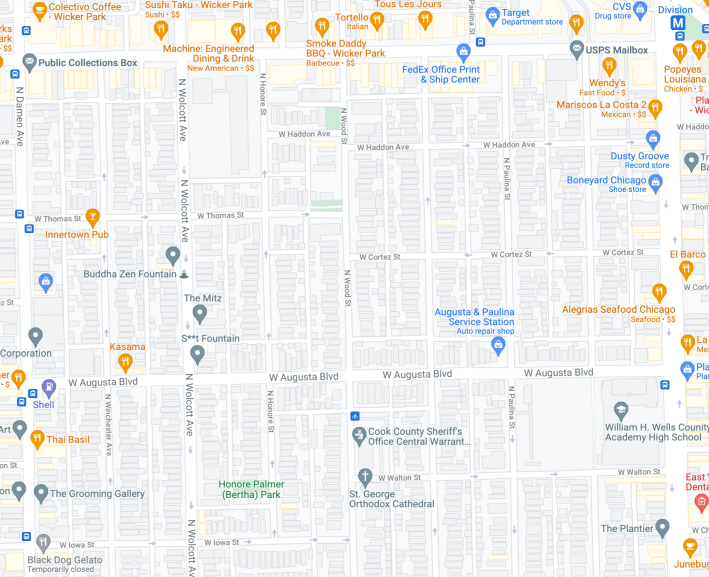
Other nearby residents Kay Whitchurch and Jonathan Webb complained about "difficulties the proposal would create when driving to and from their block on Crystal Street" after Wood is made one-way northbound, according to Block Club.
But in reality, after the street redesign is implemented, people who live on that block of Crystal will only need to detour one-to-three blocks in order to drive south from their homes, and when they return home from any direction, they won't have to modify their route at all.
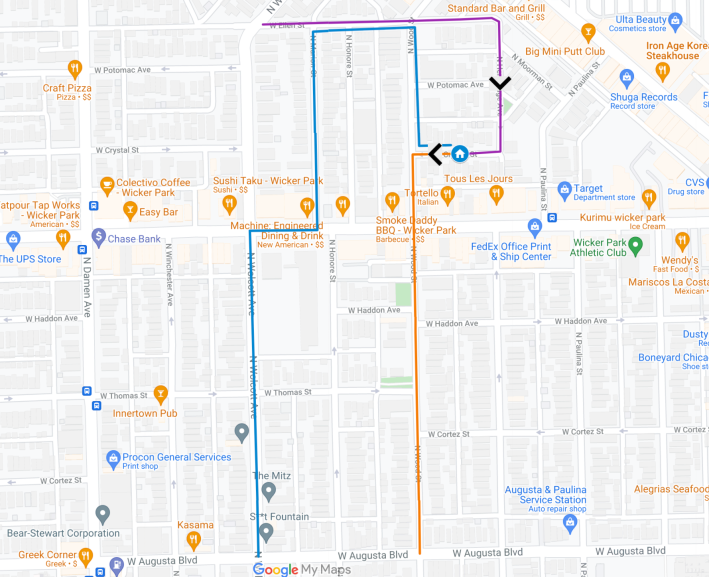
However, multiple neighbors who ride bikes said at the meeting that, while Wood is already a handy cycling route, the current layout is too tight for people biking, as well as motorists, when there is car traffic in each direction, Block Club reported. "Everyone talks about how we don’t have room for a bike lane, it’s going to cause more congestion, it’s going to take space away from us, but we never talk about all the space that we’ve already given to cars,” said local resident Lisa Soverino. “The space was taken away from people to give to cars at one point. This is just taking a little bit of it back.”
At the meeting Alderman LaSpata provided additional info on the project and the participatory budgeting process. Some neighbors argued that they hadn't gotten enough notice about the PB election, according to Block Club. Others residents noted that the election had been publicized since last summer on the ward website, on social media, and via fliers passed out at 'L' stations.
More feedback at last night's East Village Association meeting
Last night the Wood project was discussed at a virtual public meeting of the East Village Association, which represents the area bounded by Division, Damen, Chicago, and Milwaukee avenues. Once again, some residents argued that there had not been enough outreach to residents along Wood Street and that the 67 votes cast to support the initiative in the PB election were not sufficient to reflect the will of the ward. One attendee even claimed that LaSpata intentionally only advertised the election to cyclists, which is a particularly dubious notion in light of the fact that 'L' stops were canvassed.
Like Salon owner Ben Clauss, the owner of a business at Division and Wood said they will circulate a petition around for neighbors to voice their concerns. It was unclear whether the petition will address the participatory budgeting process, the protected bike lane, or both.
A representative of the East Village Association said the group plans to petition the Chicago Department of Transportation to kill the Wood Street project. Attendee Erin Groble encouraged others to to get in touch with him by email to help with distributing flyers against the bike lane.
The controversy over the Wood Street protected bike lane and multiple others over the years illustrates the problems of Not In My Back Yard-style opposition blocking safe cycling infrastructures, and Chicago's piecemeal, ward-by-ward approach to building a bikeway system. The city shouldn't be asking the public whether or not safe bikeways should be installed. Instead, the city should create and implement an equitable plan for a citywide, connected network of protected bike lanes.
Stay in touch
Sign up for our free newsletter
More from Streetsblog Chicago
Since COVID, Pace ridership has fared better on major corridors and in north, northwest suburbs than in south, west ‘burbs
The suburban bus system's top five busiest routes largely maintained their ridership rankings.
Due to incredible support from readers like you, we’ve surpassed our 2023-24 fundraising goal
Once again, the generosity of walk/bike/transit boosters is fueling our reporting and advocacy.
